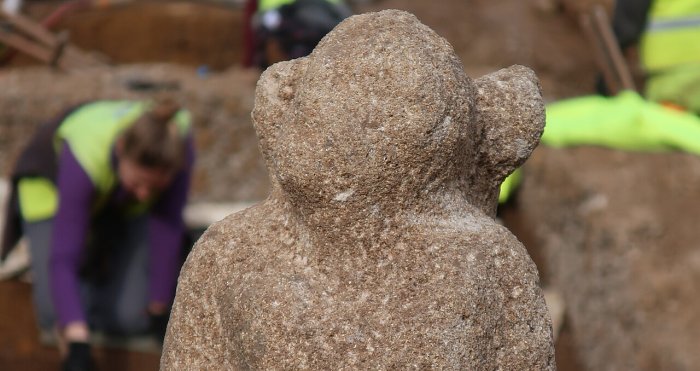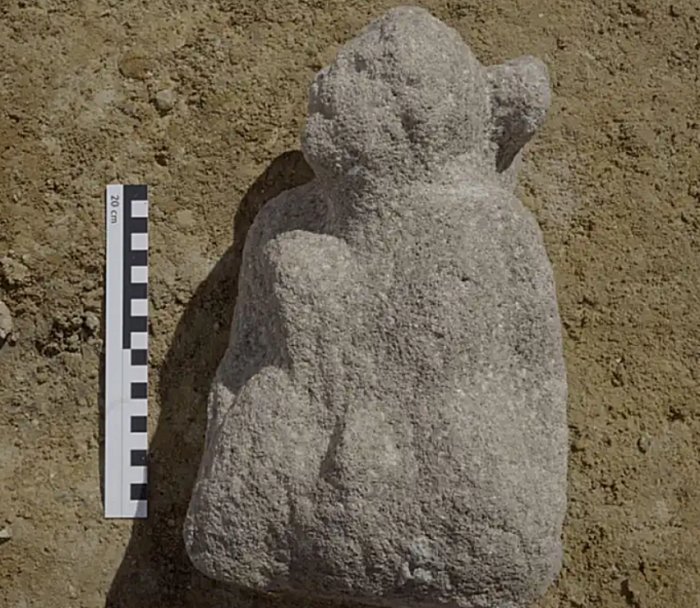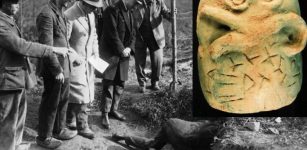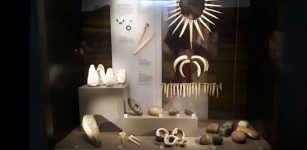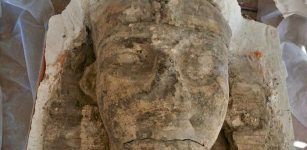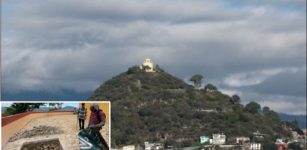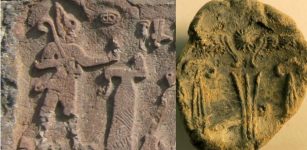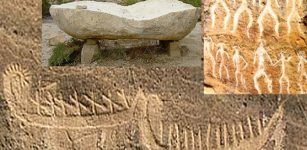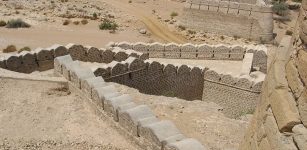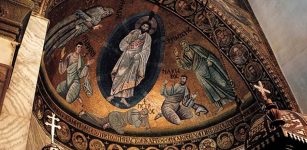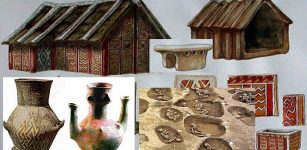Roman-Germanic Mythical Kneeling Figure With A Human Head And Snake’s Body Unearthed At Stuttgart’s Excavation Site
Conny Waters - AncientPages.com - Recent archaeological excavations in Stuttgart-Bad Cannstatt, Germany, have yielded a significant discovery – a stone figure depicting a Roman deity, which represents a testament to the region's rich heritage, religious practices, and the profound cultural influences of the Roman era.
Image credit: LAD/A. Thiel
What seemed like an ordinary, mud-stained sandstone initially caught the attention of an ArchaeoBW employee. After a closer look and a preliminary cleaning, the find turned out to be a 30-centimeter-tall figure with a human head.
Despite the stone's weathered state, the figure's unique features, such as her arms resting on her upper body and her hands on her hips and legs, which morph into a snake-like body, were still visible.
The LAD's senior archaeologist, Dr. Andreas Thiel, explained: “The figure is a hybrid creature of the Roman-Germanic world of gods, a so-called 'giant'. As comparable finds show, the figure was once part of a giant Jupiter column. These monuments combine classical antiquity with probably Germanic beliefs: Jupiter, throwing lightning bolts, rides on his horse over a figure crouching on the ground, usually naked and bearded, as can be seen, for example, in a group from Hausen an der Zaber in the Heilbronn district.”
However, the creature beneath the horse is often depicted in a pose that seems to be supporting the horse above him.
Image credit: A. Fendt / Landesmuseum Württemberg Stuttgart
“These groups of figures crowned high stone pillars placed in public squares. “Jupiter is probably depicted here as the weather god and master of the forces of nature,” says Thiel.
What makes this statue even more significant is its connection to other archaeological finds from over a century ago in Bad Cannstatt, creating a fascinating link in our understanding of the past.
Since the beginning of the year, excavations have been taking place in the Roman fort on Altenburger Steige in Stuttgart-Bad Cannstatt under the technical support of the State Office for Monument Preservation (LAD) in the Stuttgart Regional Council. Archaeologists are examining the construction site for the expansion of the municipal Altenburg school.
During the Roman era, spanning approximately from 100 to 150 AD, a fortification was initially constructed to accommodate a cavalry unit, followed by establishing an extensive civilian settlement that persisted until around 260 AD.
Image credit: LAD/G. Dakmaz
The archaeological excavations yielded a remarkable discovery – a stone figurine originating from the pantheon of Roman deities, which bears a connection to artifacts unearthed over a century ago.
“We have many finds from Roman Bad Cannstatt in our depot. When we heard about the new discovery, we immediately thought of another part of a giant Jupiter column: the base usually had a so-called Four Gods Stone,” Dr. Astrid Fendt, the head of the archeology department and consultant for classical and provincial Roman archeology at the Württemberg State Museum in Stuttgart, said in a press release.
“In the depot of the Württemberg State Museum, there is a badly damaged Four Gods Stone with depictions of the Roman deities Mercury, Juno, Hercules, and Minerva.”
The Four Gods Stone in question originated from a well situated at the periphery of the area currently undergoing excavation. It was unearthed during the archaeological explorations conducted in 1908. The unassuming colossal artifact may have been present at the site, yet it likely eluded the attention of our colleagues at that juncture, a circumstance that is not surprising when one envisions the stone in its unexcavated and soiled state, commented Andreas Thiel from the LAD.
The sculpture’s recent discovery is connected to a fragment long preserved in the Württemberg State Museum's repository. This makes it possible to reconstruct a giant Jupiter column that was once placed at an important street intersection in the Roman settlement of Bad Cannstatt.
Written by Conny Waters - AncientPages.com Staff Writer

